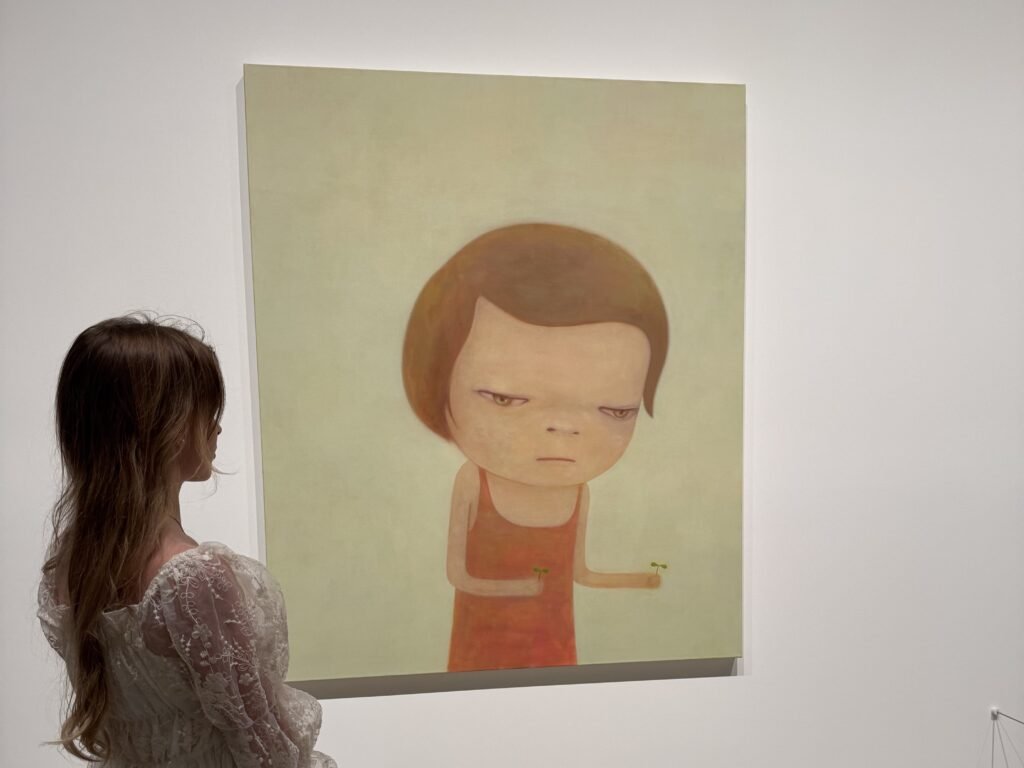Yesterday’s visit to Yoshitomo Nara’s retrospective at the Hayward Gallery left me contemplating the intersection of childhood consciousness and artistic resistance—themes surprisingly relevant to contemporary storytelling.
Nara’s wide-eyed, large-headed figures possess an unsettling directness that reminded me of writing character psychology. These aren’t cute children; they’re complex beings carrying both vulnerability and defiance. Standing before “Missing in Action” and “Miss Moonlight,” I recognized something familiar from my own narrative work: the challenge of portraying innocence that’s been forced to develop protective armor.
What struck me most was how Nara’s formative experience—growing up isolated in northern Japan while listening to American military radio—mirrors many contemporary creative journeys. He absorbed Western culture through fragments, developing his artistic voice from incomplete cultural transmission. This resonates deeply with my own experience moving between Beijing, Moscow, and London, constructing identity from cultural intersections.
The exhibition’s thematic organization revealed Nara’s consistent exploration of isolation, spirituality, and resistance. His anti-war stance, evident in works like “Stop the Bombs,” connects to his childhood exposure to Vietnam War-era broadcasts. This political consciousness emerging from personal experience feels remarkably relevant for writers exploring how individual stories intersect with larger historical forces.
Nara’s relationship with music particularly fascinated me. His discovery of folk protest songs and later punk rock influenced his visual aesthetic—the defiant expressions, the confrontational gazes. As someone whose writing rhythms are deeply shaped by music, I appreciated how his album cover designs for R.E.M. and other bands represent creative cross-pollination between disciplines.
The ceramic works and sculptures added unexpected dimensionality. Seeing his iconic figures translated into three-dimensional space highlighted how character development works—moving from flat representation to fully realized beings occupying space. The small house installations spoke to themes of home and displacement that resonate throughout contemporary literature.
Most significantly, Nara’s work demonstrates how childhood experiences of alienation can become sources of creative power rather than limitation. His characters’ direct gazes challenge viewers to acknowledge complex emotional realities, much like effective fiction demands readers confront uncomfortable truths about human nature.
Posted from London, where every gallery visit becomes a masterclass in character development.
— Writer Julia Zolotova

